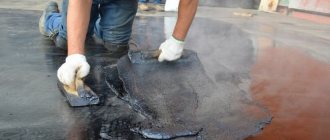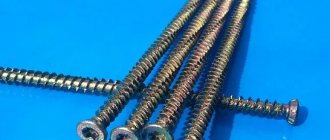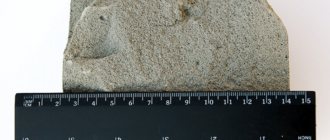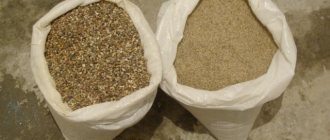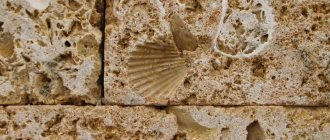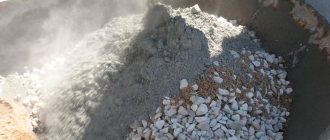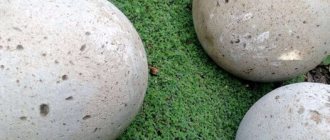Concrete is an indispensable material in construction. It is necessary for the construction of walls, fences and flooring. The strength and durability of structures is determined by its quality characteristics, as well as how well it is protected from destruction. One way to protect the material is to use a concrete varnish to coat the external and internal surfaces.
Application of varnish for concrete
When applied and dried, concrete varnish creates a protective film that protects the material from atmospheric conditions and any other influences (abrasion, mechanical damage, exposure to wind, sun, frost). Varnish coating on concrete is most often used in the following areas:
- car parking;
- warehouses for a variety of goods;
- concrete fences;
- terraces, verandas, country buildings;
- industrial buildings, premises in the pharmaceutical sector;
- pedestrian paths, concrete screeds, objects that are constantly exposed to precipitation.
Varnish can be used to treat floors, walls, ceilings, and any elements inside and outside buildings.
Varnish will protect concrete from damage
Benefits of use
The main task of varnish is to ensure the durability of the structure. This composition protects the concrete and thereby prevents its destruction. Advantages of paint and varnish compositions:
- increasing the resistance of the material to atmospheric influences;
- surface protection from abrasion;
- increasing the service life of products and buildings;
- increasing the frost resistance of concrete structures;
- preventing corrosion of reinforced structures.
Pay attention to: Headlight varnish: types of coating, necessary tools and application technology
In addition, varnish allows you to give an attractive look to structures and can be used as a finishing touch. The protective layer can be additionally sanded or painted, or immediately use varnish with pigments of the desired color. There is a separate category - special fire-fighting compounds.
Polyurethane varnish
Varnish for stone and concrete based on polyurethane Varnish for stone and concrete based on polyurethane has a lot of advantages:
- Suitable for external and internal work;
- Simple and easy to apply;
- Not susceptible to chemical irritants;
- Resists mechanical stress;
- Tolerates high temperatures;
- Does not blur when exposed to excess moisture.
Applying a coating aesthetically improves the surface of the stone. A “wet” effect is created, and even a dried surface looks slightly damp. The coating is used to impregnate not only stone or concrete: tiles, brickwork, decorative natural elements can also be coated with stone varnish. At a low cost of work, the effect is amazing; such a final coating will hide light scratches and literally highlight the beautiful texture of the natural material.
The one-component polyurethane composition is a mass that hardens in air. Easily penetrating into microcracks, polyurethane varnish for concrete removes dust from the surface, firmly connecting to it and protecting it from external influences.
Compositions for external and internal work give the base the following characteristics:
Polyurethane based wood varnish
- Strength under massive loads;
- Withstands temperature changes from +90 to -50;
- Resistant to 80% humidity;
- Resistance to directed medium-heavy mechanical impacts.
For exterior use, the varnish is applied either with a brush or a short-haired velor roller. When processing internally, it is necessary to observe safety precautions and work only in ventilated areas at temperatures up to +30. Preliminary cleaning of the base from dust and dirt is mandatory. But there is no need to dry the stone.
Important! Stone varnish can be applied to the base in any quantity, the main thing is that the drying period between layers is at least 5 hours.
The one-component composition ideally protects the surface from fungal spores, salt stains and other troubles. High fluidity and adhesion, together with deep penetration into pores, makes it possible to treat not only floors, but also walls, ceilings, and columns with a composition for external use.
Types of varnishes
Varnishes used to process concrete are classified according to different criteria:
- chemical composition;
- fire resistance;
- number of additives;
- ability to reflect light.
In a particular case, one or another characteristic comes to the fore. So light reflection matters if the composition is used as a topcoat. Products come not only matte and glossy, but semi-matte and semi-gloss. The most common classification is based on the varnish base. It can be water-based, polymer, polyurethane, as well as acrylic and silicone. Each coating has its own characteristics.
Selection rules
When choosing a varnish, you must adhere to several basic rules.
- Don't skimp on consumables. Purchase products from trusted and reliable suppliers. A certified product is the key to quality results and long service life.
- If you find it difficult to make a choice among a huge assortment, pay attention to popular and sought-after brands. The brands Texol and Tistrom have earned the trust of customers.
- Each composition has its own consumption. You need to know it to purchase the required volume of products.
Today, concrete is used to design both residential buildings and public and commercial institutions. It is used for finishing walls, ceilings and floors. Even despite its strength and wear resistance, concrete needs additional protection and treatment. For this, special varnishes are used. Compositions for concrete foundations are used in the process of carrying out interior and exterior work. Varnishes differ in composition, external effect and technical characteristics.
Famous manufacturers
Modern industry offers the buyer a wide range of paints and varnishes. Examples are presented in the table:
| Brand and type | Properties | Application |
| "Texol" - polymer varnish for concrete | Versatility and ease of use at work | Concrete, brick, stone |
| Moisture and wear resistance | ||
| "Tistrom" is a one-component polyurethane product | Chemical resistance, hydraulicity | Brick, metal stone |
| Resistance to mechanical stress | ||
| Strong - silicone | Hardening, waterproof effect | For interior work with stone |
| "Dali" - acrylic-silicone varnish | Shockproof properties, moisture resistance | For stone and brick surfaces |
Areas of application of protective equipment
Such finishing materials can be used in parking areas.
Varnish for concrete and stone is the optimal chemical for extending the life of a building structure. The paint and varnish substance protects concrete surfaces from many factors of destruction. It is used in all areas of construction, and mainly for fencing buildings made of concrete, large warehouses, hangars, parking lots and parking lots. The varnish is also used for production facilities that belong to the industrial or pharmaceutical fields, to cover structures that are susceptible to climatic influences, such as bridges, walking paths, squares, parks.
Water-based concrete varnish is used for interior and exterior work. This product is used to treat decorative surfaces made of stone and brick, floors and other structural elements with a concrete base.
Types and compositions of quality coatings
Polyurethane
The undeniable advantage of the substance is its complete resistance to water (moisture). It will be relevant to use the product in conditions with high air humidity. Polyurethane varnish is used for external treatment of facades, swimming pools, paving slabs made from natural or synthetic raw materials.
This coating does not allow water to pass through at all.
Polyurethane enamel is a solution that contains oligomers and polyurethane components. The total mass of the substance includes an organic component, due to which during the hardening process the product forms a protective, transparent film. It is possible to add pigmenting particles to the varnish composition, which will give the material the required color.
Polymeric
A coating that performs protective functions is applied to structures that have a mineral base, such as brick and concrete. A positive feature of the product is its decorative use and increased resistance to wear. This is the only varnish that achieves the effect of wet stone. Distinctive qualities:
- abrasion resistance;
- strength;
- moisture resistance;
- resistance to chemical influence.
This coating gives a beautiful wet effect.
The varnish substance is used for all types of exterior work. It is possible to pigment the material. The structure coated with the substance does not lose color and helps maintain load-bearing capacity. The composition is based on single-component ingredients, which makes it possible to dry in a shorter time than other products. The peculiarity is determined by the minimal content of water components.
Silicone and acrylic types
Concrete varnish - acrylic or silicone, used in work for treating residential premises.
Expensive protective agents among paints and varnishes. Professionals recommend using it for interior work; the area of use is explained by the pricing policy. Although the composition of the product has high performance indicators, it is not advisable to use the product for treating external structures, since cheaper analogues will cope with the protective function. When dry, silicone or acrylic varnishes give the treated structure a transparent color with a matte sheen.
Water-based products
This product also gives a slight glossy effect after application to the selected surface.
Rarely used for processing concrete structures. These varnishes are usually used to coat wooden products and decorative concrete. The protective agent creates a colorless glossy layer on the surface. As a rule, the solution is presented in the form of a two-component polyurethane product, which is used to coat concrete. For example, the popular PaliStone brand is particularly popular among buyers.
Varnishes for concrete and stone
Search by manufacturer Alpa Alpina Anza Beckers Belinka Bona Bostik Caparol Dali Dufa Dulux Eurotex ) Flugger (Weather vane) Hammerite (Hammerite) Kerakoll (Kerakoll) Kiilto (Kiilto) Makroflex (Macroflex) Mapei (Mapey) Marshall (Marshal) Neomid (Neomid) Petri (Petri) Pinotex (Pinotex) Pirex (Pyrex) Quelyd (Kelid) Sikkens (Sikkens) Soudal (Soudal) Symphony (Symphony) Synteko (Sinteko) Teknos (Teknos) Terraco (Terrako) Tikkurila (Tikkurila) Tytan (Titan) Veres (Veres) Vincent (Vincent) Woodmaster (Woodmaster) Aquatex VGT Novbythim Gems Senezh Tex
Latex impregnation with silicone additives prevents moisture absorption, creates a film that is resistant to moisture, preserves the ...
Special transparent polyurethane varnish for concrete and stone to protect against abrasion, wear, weathering, destruction and soiling...
www.samotsvet.com
Selection rules
When choosing a varnish, you must adhere to several basic rules.
- Don't skimp on consumables. Purchase products from trusted and reliable suppliers. A certified product is the key to quality results and long service life.
- If you find it difficult to make a choice among a huge assortment, pay attention to popular and sought-after brands. The brands Texol and Tistrom have earned the trust of customers.
- Each composition has its own consumption. You need to know it to purchase the required volume of products.
